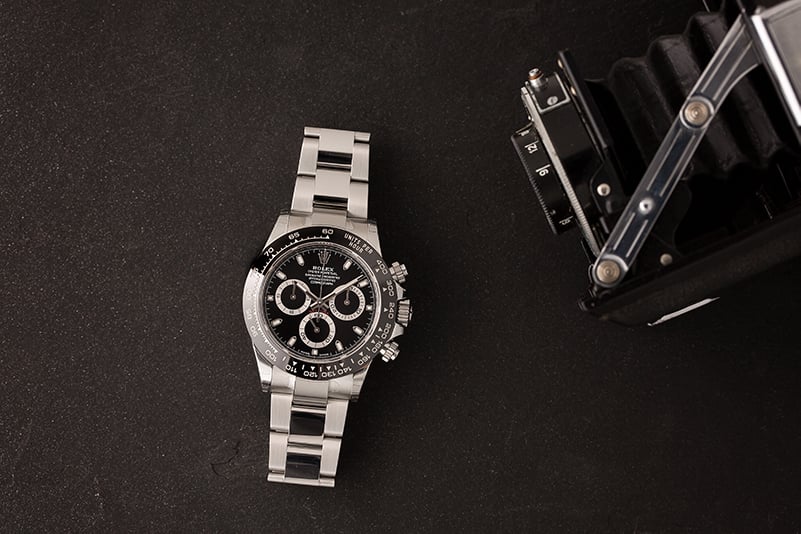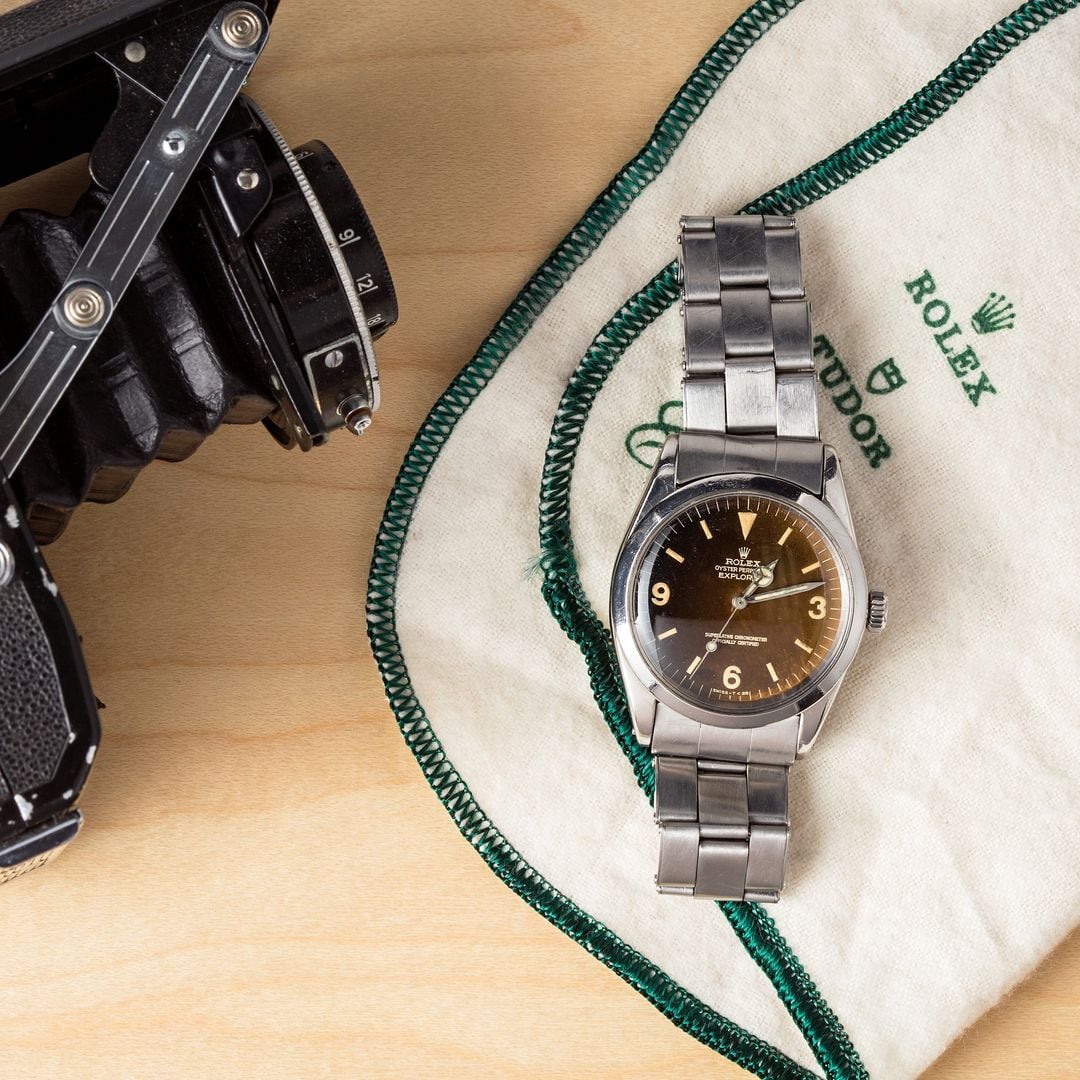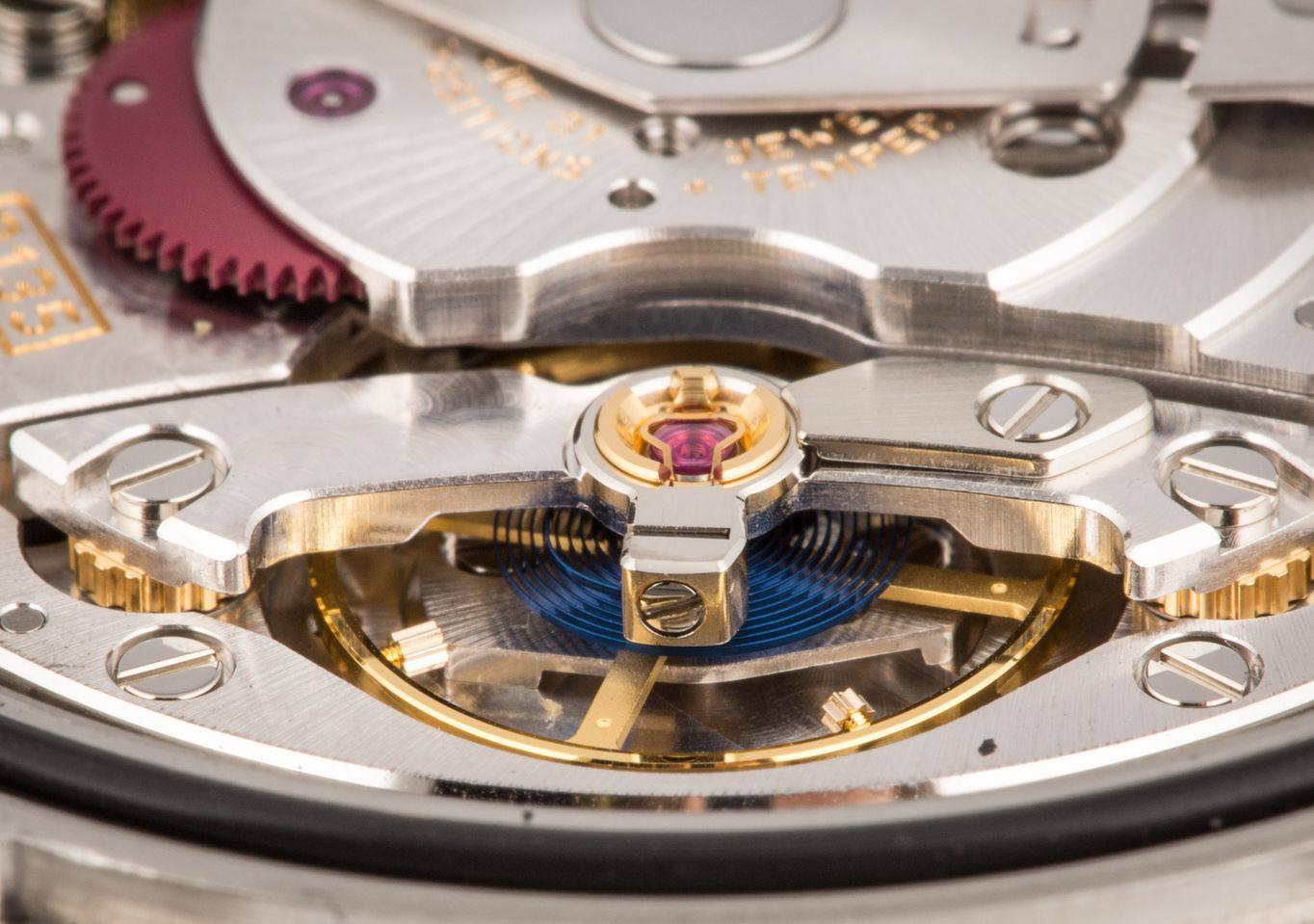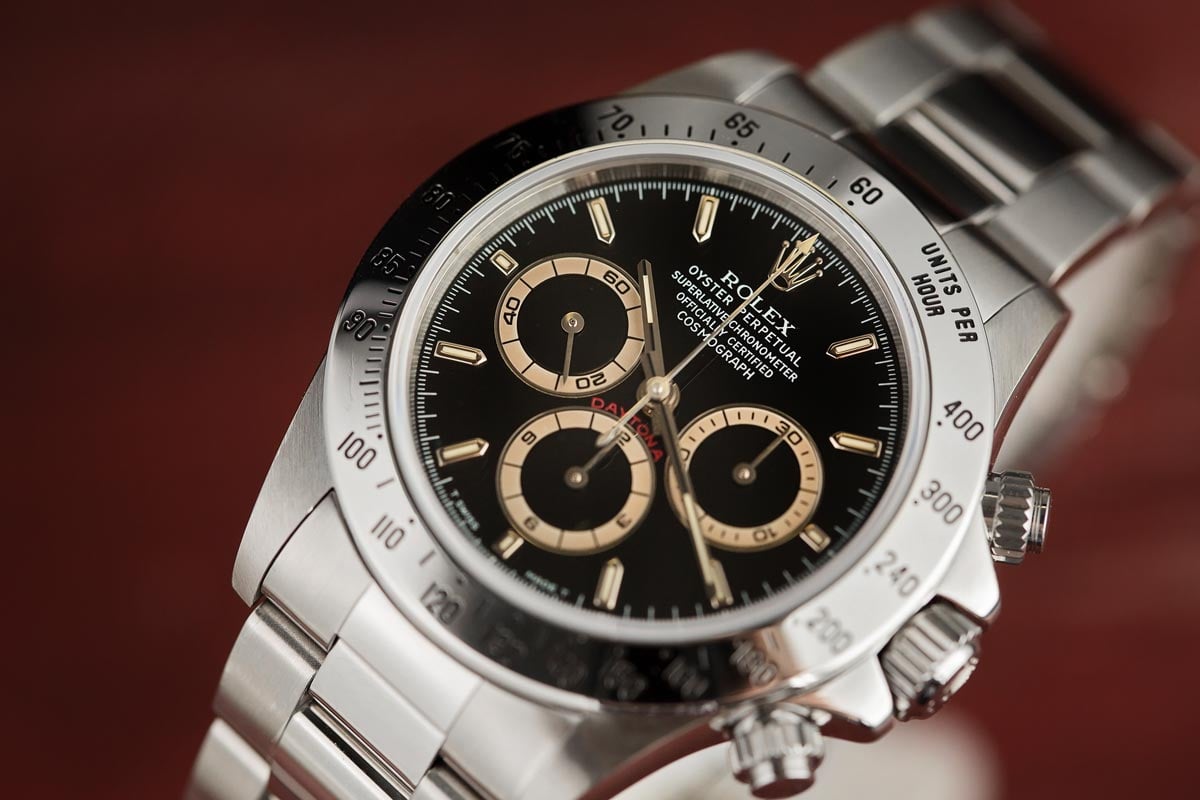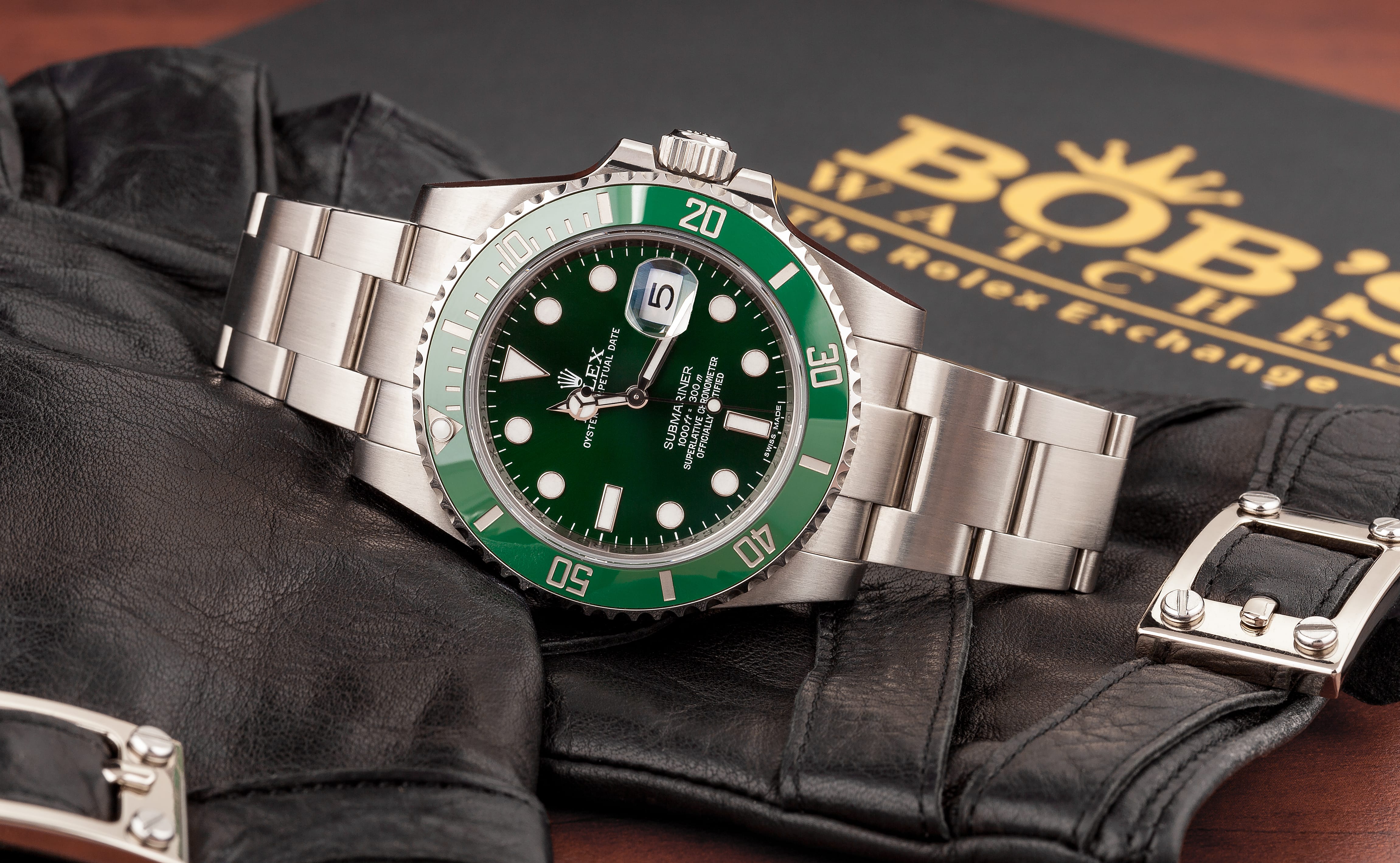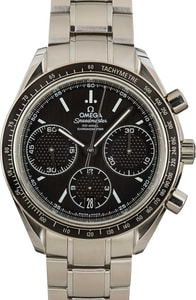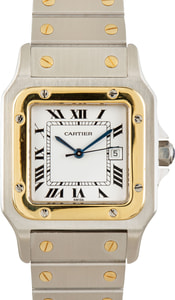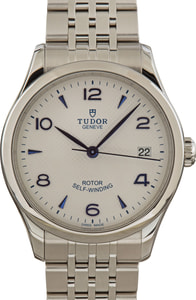The Rolex Daytona is the world’s most recognizable luxury chronograph watch, and that recognition stems from a few key design traits such as a pair of chronograph pushers, a trio of subdials, and most importantly, a bezel with a tachymeter scale.
Ever since its introduction in the 1960s, the Daytona has always featured a tachymeter scale on a fixed bezel. It doesn’t matter if the Daytona is in gold, steel, or platinum, or if the bezel is fashioned from Plexiglass, metal, or Cerachrom—the tachymeter bezel is there. The only exceptions to this rule are those extravagant bejeweled Daytona watches that feature precious gems such as diamonds (like on the “Tiger’s Eye” Daytonas) or colorful sapphires (like on the Rainbow Daytonas) on the bezel.
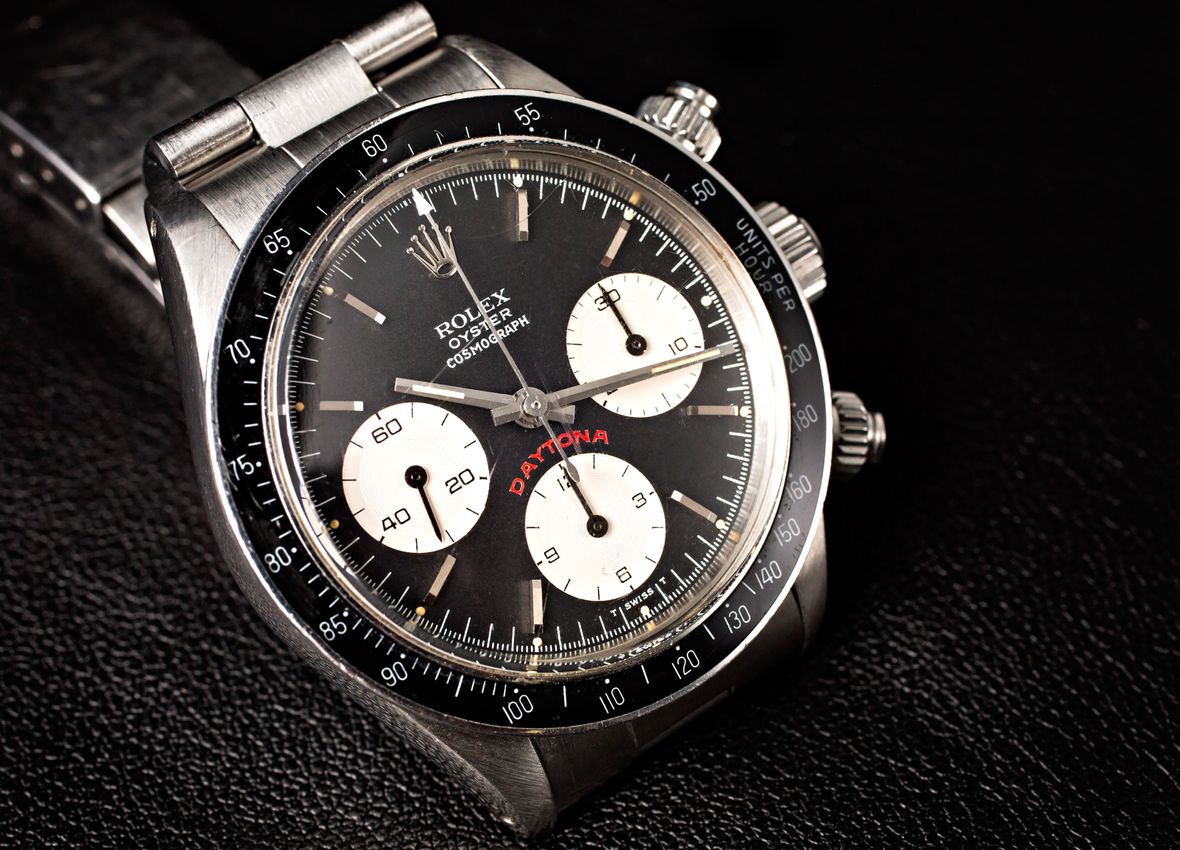
Daytona Bezel Key Features
–Material: Plexiglas (vintage only), Metal, or Cerachrom
–Colors/Metal types: Black Plexiglas, Black Cerachrom, or Brown Cerachrom; Stainless Steel, Yellow Gold, White Gold, or Everose Gold
–Structure: Fixed
–Scale: Tachymeter scale
Click here to learn more about the Rolex Daytona.
Aside from these rare gem-set numbers, if you have a regular-production Rolex Daytona, it will have a tachy bezel. A tachymeter scale can measure speed based on time traveled over a fixed distance or distance traveled over fixed speed, which is ideal for a motorsports-inspired chronograph like the Daytona. Plus, you can use it to measure either kilometers or miles.
If you’ve ever looked at the Rolex racing bezel and wondered how it works, read on as we guide you on how to use the Cosmograph Daytona Tachymeter bezel.
The History Of The Daytona Tachymeter Bezel
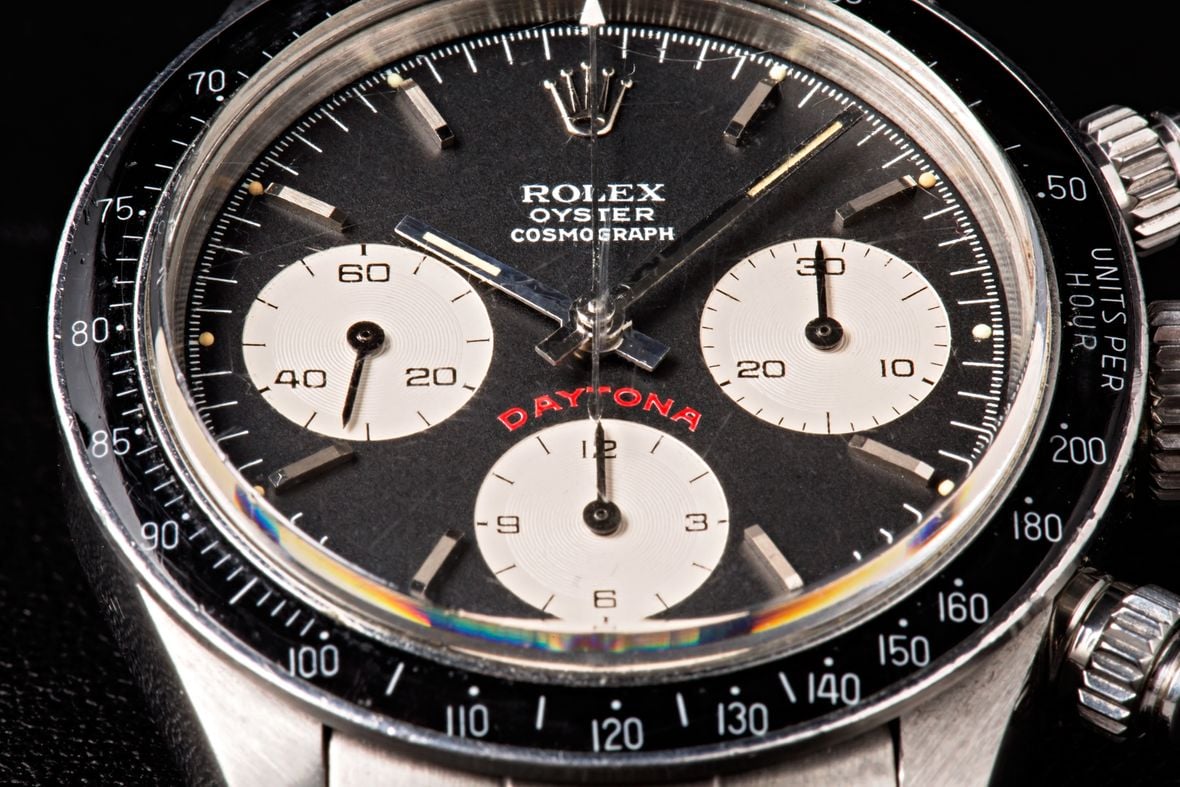
Rolex introduced the Cosmograph in 1963 as the company’s flagship chronograph collection. The company initially toyed with the idea of calling it the Cosmograph Le Mans but quickly settled on Comosgraph Daytona instead. It’s been rumored that this decision was made to appeal to the American market and to highlight its association with the newly built Daytona Speedway in Florida, but like all ambiguous parts of Rolex’s story, the company has never officially confirmed this.
Since its release, the Daytona has seen many bezel variations, including stainless steel, yellow gold, and Plexiglas in early references (such as vintage “Paul Newman” Daytonas) and, more recently, aluminum, ceramic, and white gold. The tachymeter bezel’s primary function is to measure average speeds per hour while traveling over a fixed distance. This was a feature initially developed by Rolex in a bid to become the official watch of NASA, hence its original name “Cosmograph.”
Funny enough, the Omega Speedmaster (which was in fact, the world’s first chronograph that moved the tachymeter scale from the dial to the bezel) was initially positioned as a motorsports chronograph but since it was selected by NASA as the agency’s official watch, it became known as the Moon watch.
Instead of space, Rolex’s iconic chronograph found its home among the world of professional driving, where the tachymeter bezel could be used to measure driving speeds. Early references allowed the wearer to measure driving speeds of up to 200 kilometers per hour, while later references were upgraded with a bezel that featured 400 graduations per hour.
Through the years, Rolex has continued to improve upon the movement that powers the Daytona, evolving from Valjoux-based manual movements to Zenith “El Primero” based automatic movements (Caliber 4030) to finally, entirely in-house made automatic movements (Caliber 4130.) The Caliber 4130’s vertical (instead of lateral) clutch that activates the chronograph hand is what gives modern Daytonas their signature precise starts/stops and smooth sweeps. The movement also plays a crucial part in the accuracy of the bezel calculations and the Daytona can measure time to within 1/8 of a second.
Rolex Daytona Functions
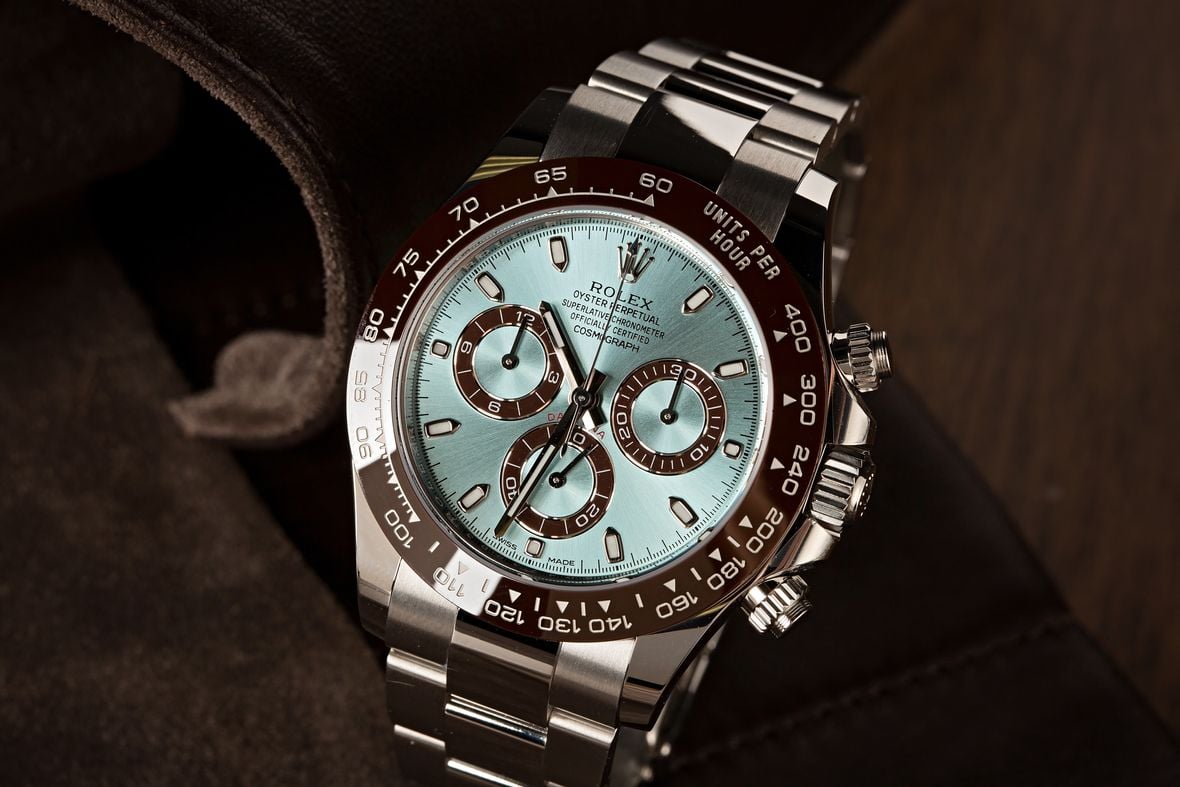
The Daytona chronograph dial permits the wearer to measure elapsed time, indicated in hours, minutes, and seconds. On modern Daytona watches powered by Caliber 4130, the 9 o’clock counter displays the elapsed hours, the 3 o’clock counter displays the elapsed minutes, and the center arrow-tipped chronograph hand displays the elapsed seconds via the 60-second scale on the dial periphery.
The Daytona chronograph tachymeter bezel allows the wearer to read average speed over a set distance based on passed time. It can measure speeds up to 400 units, whether in kilometers or miles.
How to use the Daytona Tachymeter Bezel
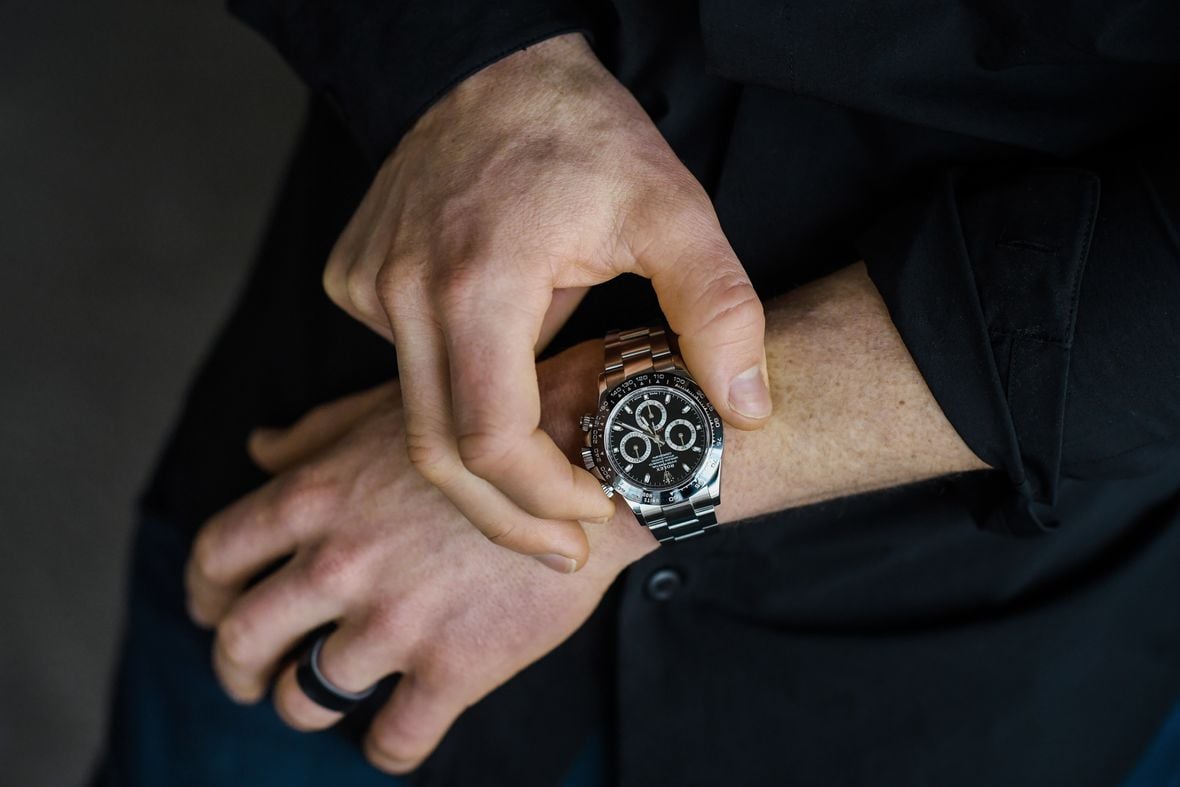
As previously mentioned, the tachymeter bezel is marketed as a tool for measuring driving speeds. To use the bezel, you will also need to engage the side pushers to access the chronograph functions. The top pusher starts and stops the central chronograph hand while the bottom pusher resets it back to zero.
- To begin, unscrew both the top and bottom pushers. These are screwed into the case to maintain the watch’s water resistance. The top pusher will be used to start and stop the chronograph hand. The bottom pusher will be used to reset the hand.
- Let’s say we want to measure the speed of a car going around a one-mile track. Press the top pusher once the car takes off (to activate the chronograph hand) and press it again when the car has crossed the finish line.
- Check to see where the chronograph hand is pointing to; for instance, if it points to 140 on the tachymeter scale, then the car traveled at 145mph. Of course, if it was a one-kilometer track (instead of a one-mile track), then the car was traveling at 145kph.
- Press the bottom pusher to reset the chronograph hand back to zero.
In 2013, Rolex became the Global Partner and Official Timepiece of Formula However, you certainly don’t have to be a Formula 1 driver to take advantage of the tachymeter bezel. And even if you never use this scale, the tachymeter bezel plays a vital role in the overall design of the iconic Rolex Daytona watch.
